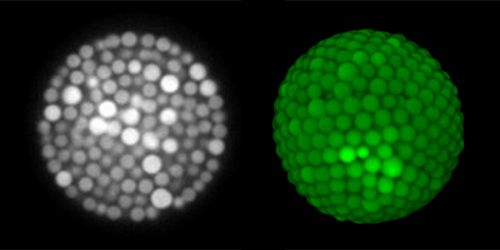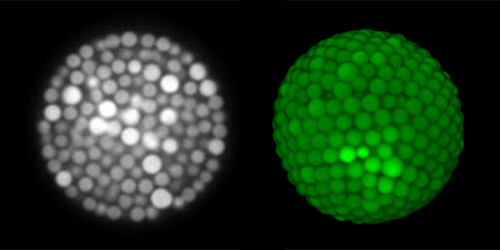Order in Glasses
Glassy materials are characterized by their irregular structure. However, new 3D imaging experiments show that the positions of particles within a colloidal glass made from a suspension of micrometer-sized particles aren’t completely random.
Despite decades of research, there are still many questions about how a glass forms and what exactly happens when the material crosses the boundary from a liquid to a solid and the particles get frozen in place. A recent prediction suggests that while particles in a given glassy sample might appear disordered, if the positions of the particles are tracked over time, patterns, or correlations, between the particle positions should appear.
To explore this hypothesis, Bo Zhang and Xiang Cheng from the University of Minnesota in Minneapolis studied suspensions of round polymer particles confined inside spherical cavities. Using a confocal microscope the authors were able to pin down the 3D position of each particle as a function of time and compare how this differed in cavities containing varying particle concentrations—the higher the concentration, the closer to the glass transition the suspension was. Zhang and Cheng observed that the particle positions within the spherical cavities became more correlated as the particle concentration in the cavity increased. The experiments show that while the particles could move and swap places within these correlated clusters, the overall cluster pattern didn’t change. The formation of these particle clusters suggests that the glass transition, like crystallization, can be seen as a first-order phase transition and not as the simple kinetic slowing-down process predicted by other theories.
This research is published in Physical Review Letters.
–Katherine Wright





